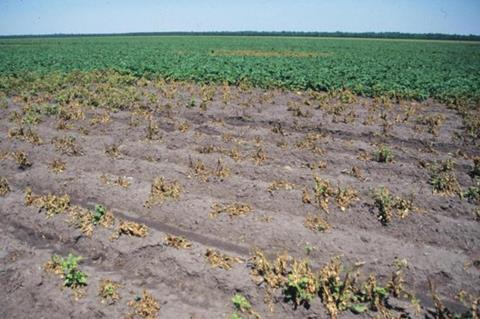Fungicides are plant protection products that kill fungi or their spores. In agriculture, these products are used to combat fungal diseases and ensure crop yields. The disadvantage: if used excessively, resistant pathogens can develop and even infect neighbouring fields.

An international research team has developed a mathematical model that can be used to calculate the economic and often hidden costs of fungicide resistance. Chaitanya Gokhale, Professor of Theoretical Evolutionary Biology at Julius-Maximilians-Universität Würzburg (JMU), was one of the researchers involved. The results have been published in the journal PLOS Sustainability and Transformation.
READ MORE: Mycoviruses enhance fungicide effectiveness against plant pathogens
READ MORE: Use of antifungals in agriculture may increase resistance in an infectious yeast
For the calculations, the researchers used a model that can be used to calculate the spread of fungal diseases in several fields. The team combined this with analysis methods from economics.
Creating a mathematical framework
“Our results show that the economic costs of fungicide resistance are not so easy to determine,” says the JMU professor. The study showed that yields can increase or decrease depending on the context. The highest costs of resistance are generated by pathogens with a medium invasiveness - i.e. a medium ability to spread into new areas.
“We observed that while intuitively the total economic costs increase with more resistance and more yield loss, they actually decrease with expensive fungicides,” says Gokhale. The team was also able to identify several biological factors that influence the costs. On the one hand, the degree of resistance within a pathogen population is important. Secondly, the basic reproduction number of a pathogen is also decisive. In addition, it depends on how much field yield is lost due to a fungal infection.
“Our study provides the mathematical framework with which political decision-makers and stakeholders from the agricultural sector can work,” says the evolutionary biologist. On this basis, effective measures for the sustainable use of fungicides can be designed. This in turn could help to secure crop yields, reduce the unnecessary use of chemicals and ensure long-term food security.
Next steps
As this is a theoretical model, the appeal to researchers is clear: “Future data collection and empirical studies will help test our findings in the field,” says Gokhale.
In addition to the JMU researcher, the following were involved in carrying out the study: Dr. Alexey Mikaberidze, University of Reading (England), Dr. Maria Bargués-Ribera, University of Cambridge (England), and Dr. Prateek Verma, University of Berkeley (California, USA).
Topics
- Alexey Mikaberidze
- Antimicrobial Resistance
- Chaitanya Gokhale
- Economic Equality
- Food Security
- Fungi
- Healthy Land
- Innovation News
- Julius-Maximilians-Universität Würzburg
- Maria Bargués-Ribera
- Prateek Verma
- Soil & Plant Science
- UK & Rest of Europe
- University of Berkeley
- University of Cambridge
- University of Reading
- USA & Canada







No comments yet